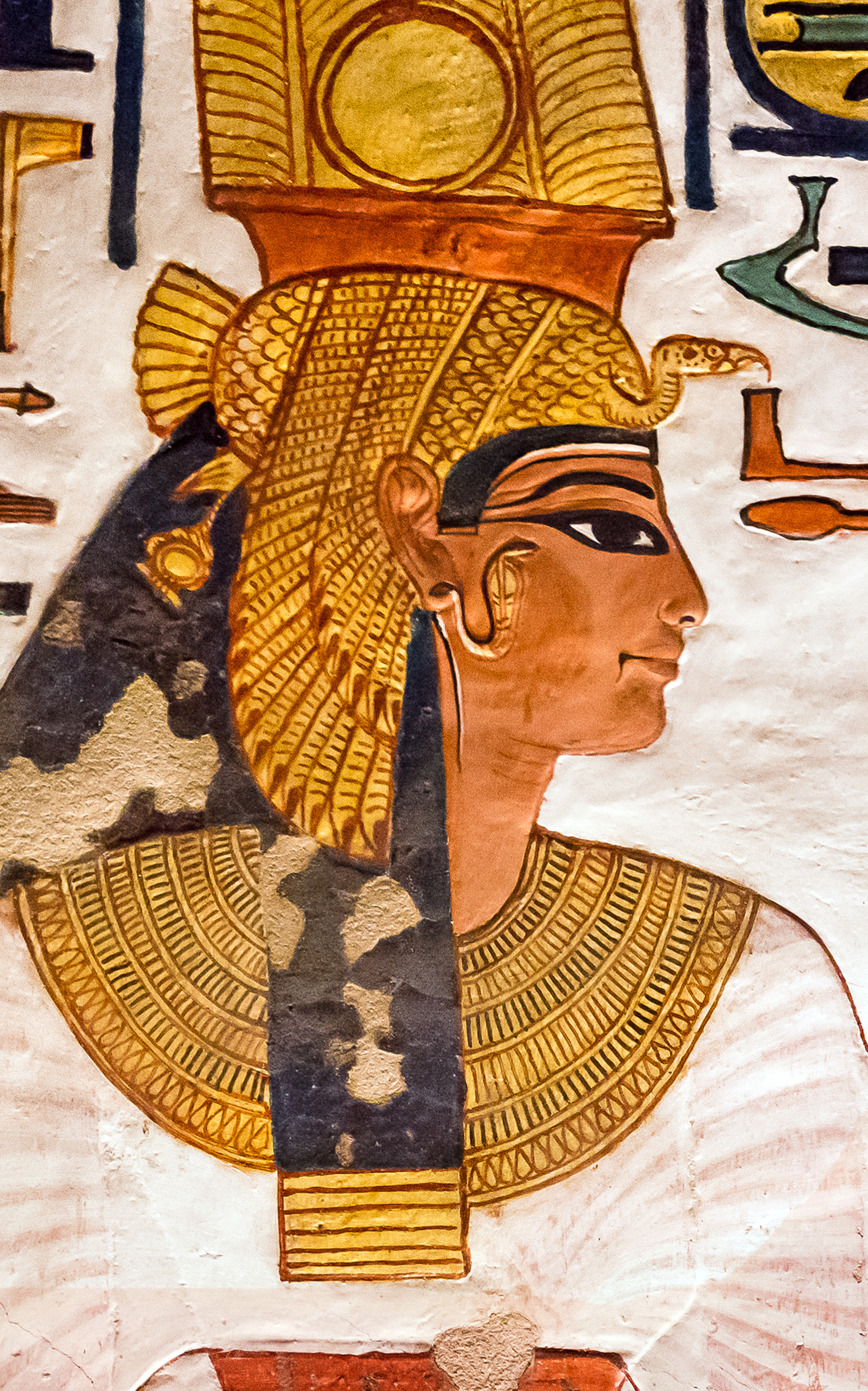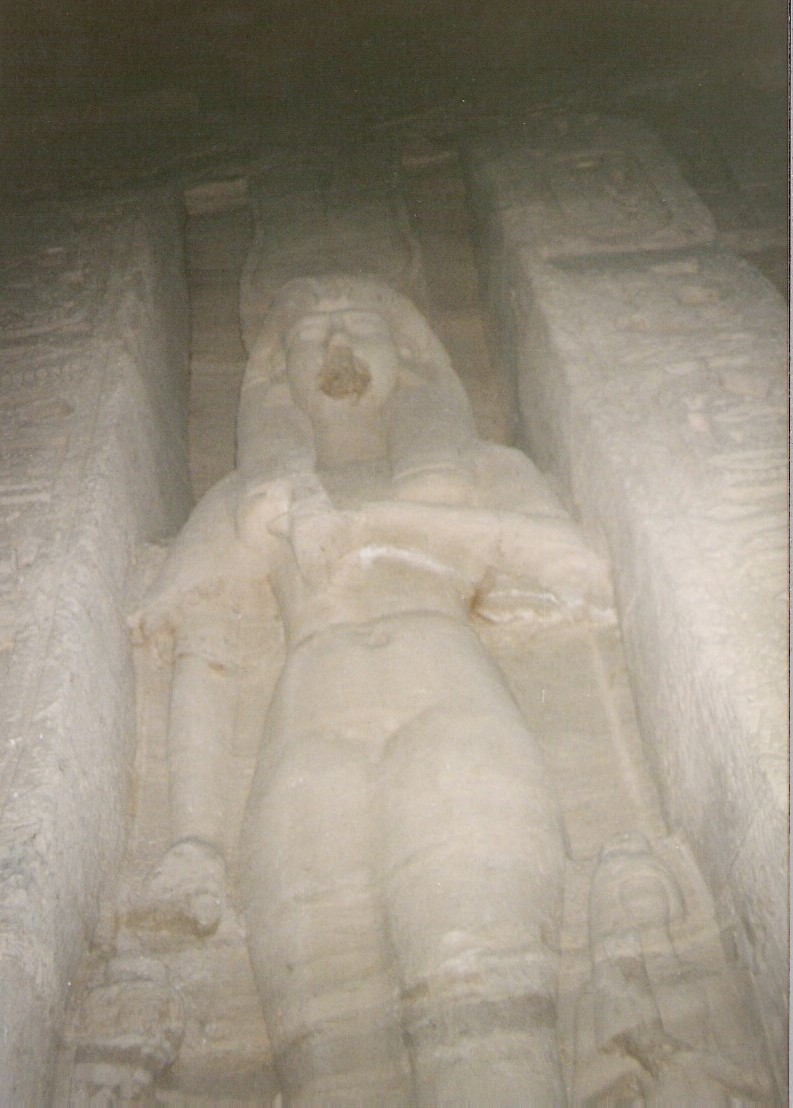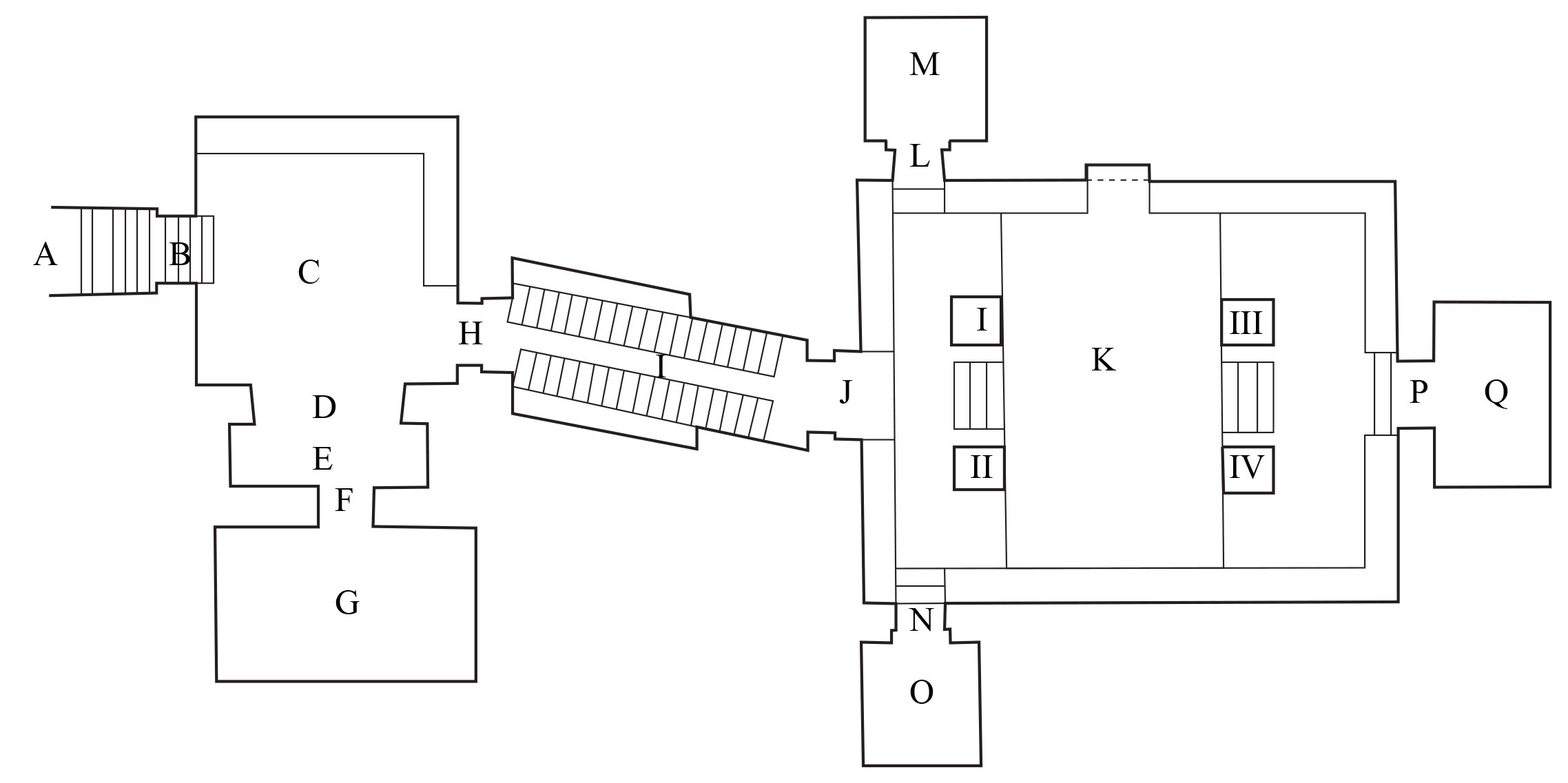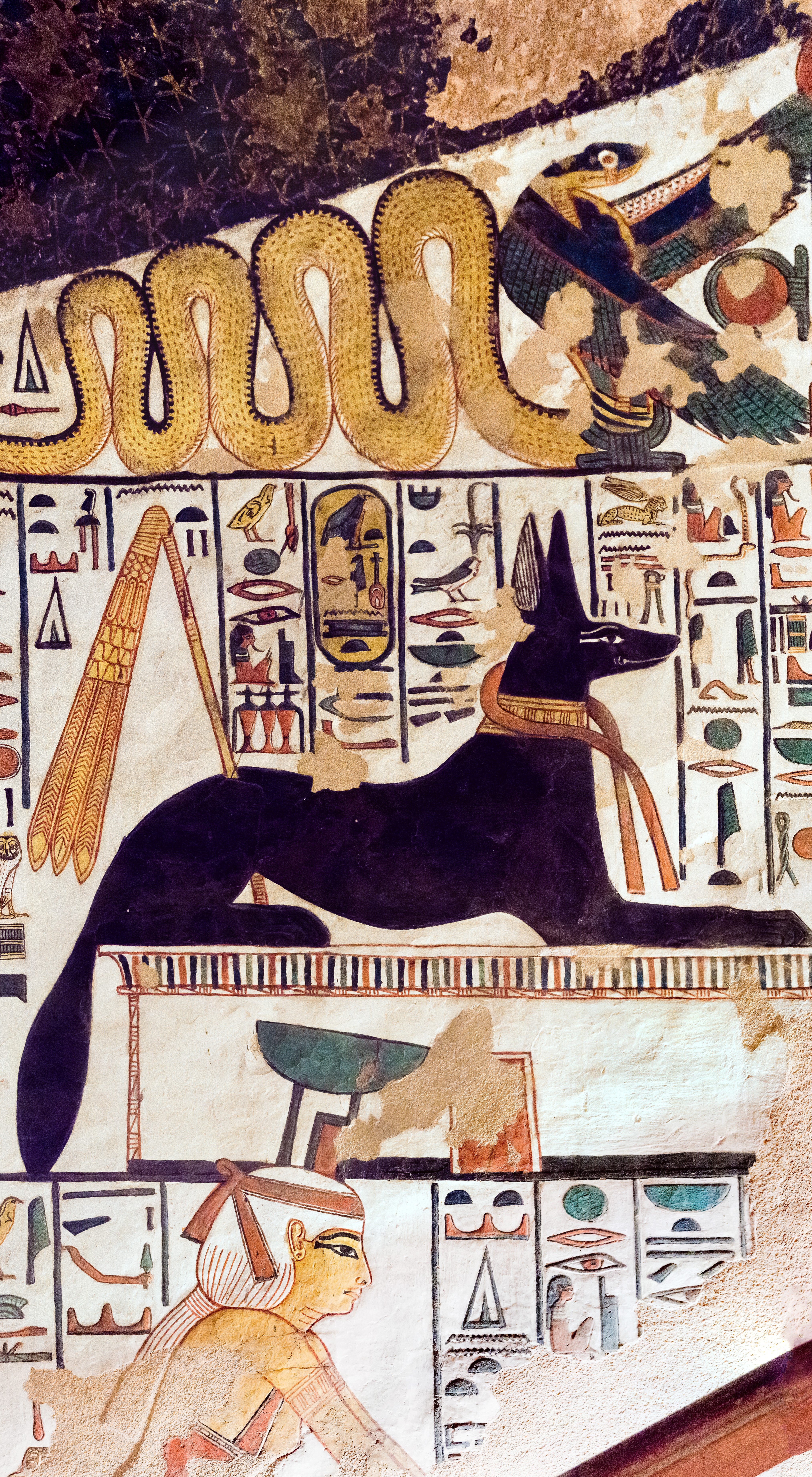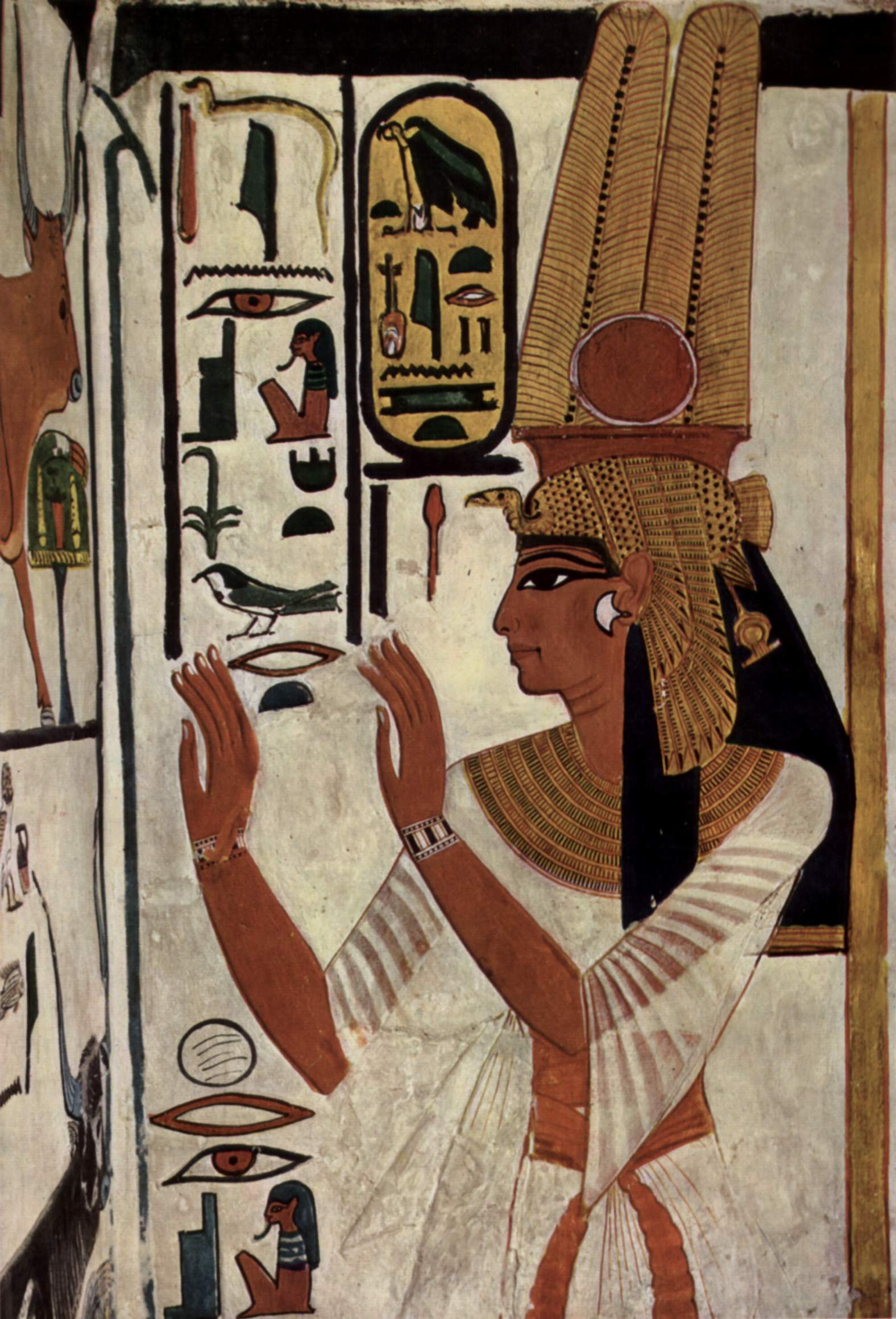
Introduction to Nefertari and QV66
Brightly painted QV66, certainly one of the most spectacular monuments of the ancient world, is the tomb of Nefertari (d. ca. 1255 BCE), the Great Royal Wife of Ramesses II (r. ca. 1279 – ca. 1213 BCE).
Her name means something like “The One to Whom Beauty Pertains” or “Beautiful Companion,”
and also includes the element Meritenmut “Beloved of the Goddess Mut.”
While still a teen, she married Prince Ramesses, the son of Pharaoh Seti I (r. ca. 1290 - ca. 1279). When Ramesses succeeded to the kingship,
Nefertari became his primary consort with the title, Great Royal Wife (Hm.t nsw.t wr.t).
Some of Neferatri's other titles, listed in the texts from her tomb, include
Lady of The Two Lands (nb.t-tA.wy) and Mistress of Upper and Lower Egypt (Hnw.t-Shmaw-mHw), Lady of Grace (nb.t-imA.t),
and Sweet of Love (bnr.t-mrw.t).
Literate Queen
Famous today for her beauty, Queen Nefertari was also probably highly educated.
On one of the walls from her tomb (Chamber G), Nefertari stands before the god Thoth, the god of knowledge and writing,
in a vignette for Chapter 94 of the Book of the Dead.
This spell, recorded in its entirety, is for obtaining a scribal kit (water jar and the scribal palette) from Thoth, “the keeper of the papyrus roll.”
Identifying herself as a scribe before Thoth, the gof of writing, suggests that Nefertari may have been literate.
There is a lot of evidence that Ramesses II had great affection for his queen.
At Abu Simbel, Ramesses built two rock-cut temples, the Great Temple, dedicated to Ramesses himself, and the Smaller Temple (Temple of Hathor), dedicated to Queen Nefertari.
In a rare honor, the colossal statues of Nefertari in the facade of the smaller temple are just as tall as the statues of her husband.
Moreover, Inscribed on the facade of the temple at Abu Simbel, she is called “The one for whom the sun shines,” while in Inner Pillared Hall of the Great Temple,
her titles are given as “The Hereditary Princess, Great Royal Wife, Nefertari Meryetmut, richly favored, Mistress of South and North, possessing charm, and one sweet of love.”
Tomb and Preservation
Nefertari died around 1255 BCE, and was buried by her husband in the Valley of the Queens.
While excavating in Deir el Medina and the Valley of Queens, Italian Egyptologist Ernesto Schiaparelli, the director of the Museo Egizio di Torino, discovered her tomb (QV66) in 1904.
Built and painted by the skilled workers living at the village of Deir el Medina, Nefertari's tomb is the largest in the Valley of Queens,
and is certainly one of the most beautifully decorated extant ancient Egyptian tombs.
The images and texts depict Nefertari's journey into the afterlife, where she is guided by various deities.
The elegant figures in her tomb were painted by the masters from Deir el Medina.
They are in the same tradition as the paintings in the tomb of her father-in-law, the Pharaoh Seti I (KV17)1, that turned away
from the style of figures with large heads and a short lower legs, painted in the tombs of Tutankhamun, Ay, Horemheb, and Ramesses I2.
At least 20% of the wall paintings from the tomb has been completely lost, and even in 1904, when first cleared, the condition of the tomb was precarious.3
Between 1986-1992, the Getty Conservation Institute embarked on a massive project of condition assessment, analysis, emergency treatment, and conservation of the wall paintings in Nefertari's tomb.
Following the restoration, I was able to visit the tomb in 1995. At the time, it cost $30 (100 E£) to go in for 10 minutes. I have been to many ancient sites, but this was the most spectacular.
After translating these texts, I hope that I can go again one day and read them off the walls.
The aim of this site is to map out the tomb’s layout, and present the wall paintings, with transliterations and translations into English of the texts in QV66 (I am also working on a Chinese translation),
explaining how the imagery relates to these texts, as well as Egyptian funerary art from other tombs and papyri. I have used some of Schiaparelli's photos from his 1923 excavation report (which are now in public domain),
showing what the tomb looked like in 1904.
The texts and paintngs from Nefertari’s tomb describe her journey into the afterlife,
showing the various divinities that help her along the way. For this purpose, the tomb is inscribed with Chapters 17, 94, 144, 146, and 148 of the Book of the Dead.
Notes
1. Melinda K. Hartwig, A Companion to Ancient Egyptian Art (John Wiley and Sons, 2015), 263.
2. William H. Peck, “Proportion and Style in Ancient Egyptian Art by Gay Robins,” Journal of Near Eastern Studies 58, No. 3 (1999): 206 [203-207].
3. John K. McDonald, House of Eternity: The Tomb of Nefertari, (Los Angeles: J. Paul Getty Trust, 1996), 42.
|
